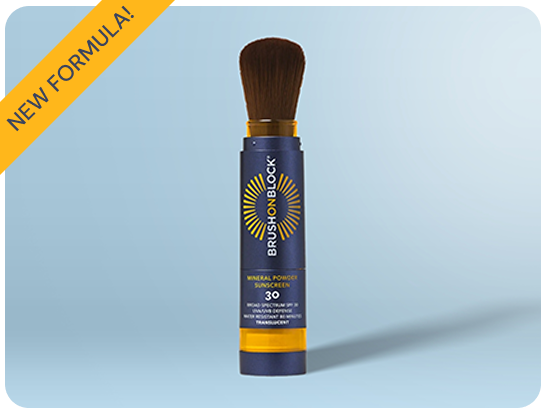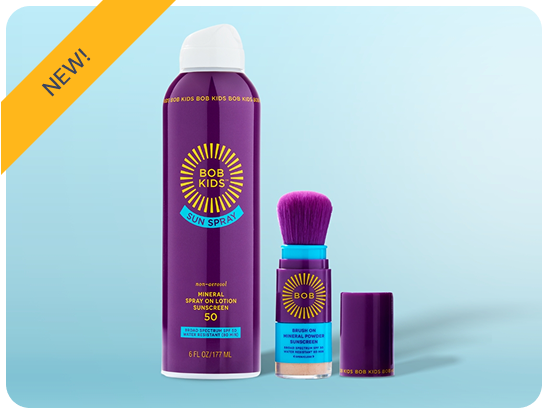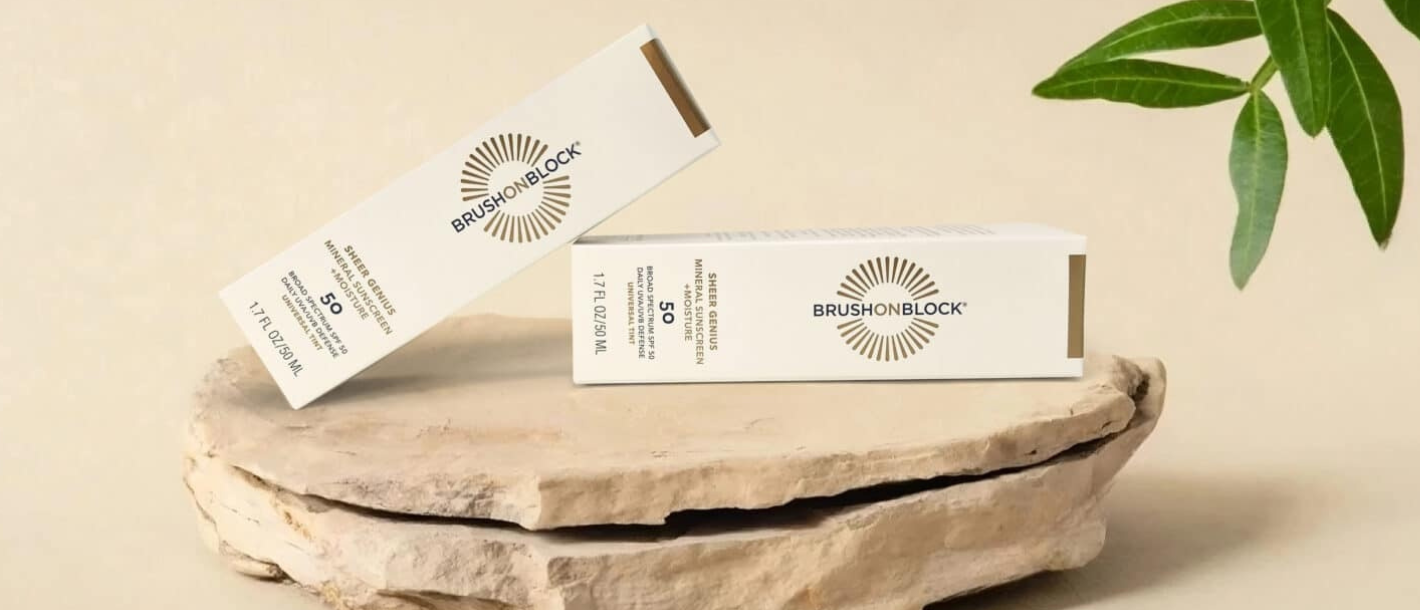
Brush On Block sat down with Elizabeth Berry, MD, to talk about sun protection for children. Dr. Berry is an Associate Professor of Dermatology at the School of Medicine, and a practicing board-certified dermatologist, both at Oregon Health Sciences University. She specializes in Melanoma, the most deadly type of skin cancer. She is also the mother of a three and a half-year old, and as such, is living the daily struggle of how to best protect her daughter’s delicate skin from the sun.
Children under 6 Months
The first thing we wanted to address was the warning that appears on the Drug Facts panel on every sunscreen, “Children under 6 months, ask a doctor.”
“Infant skin is really sensitive,” says Dr. Berry, “So our formal recommendation for children under 6 months is to avoid putting anything on skin, use sun protective (UPF, or Ultraviolet Protection Factor) clothing and keep out of direct sun. If you must, use baby formulation sunscreen with zinc oxide and titanium dioxide, which is exactly what you have in Brush On Block. Children’s skin has a larger surface area to volume ratio than adults do, which makes risk of absorption much higher. My baby was born in fall, so it was easy to keep her out of the sun. But for kids under 6 months, the general guideline for sun protection is to wear sun protective clothing, or stay in the shade and if you can’t avoid the sun, use mineral sunscreen.”
6 Months to 5 Years
Once babies pass the six-month mark, "make sure you use UV protective clothing. Any visible skin should have sunscreen and reapply every 2 hrs." (Remember to reapply ALL sunscreens every 2 hours in the sun, but check the label for how often to reapply if your child is in the water.) “Stay away from spray, unless you are spraying it on your hand and applying from the hand. It is difficult to get full coverage with a spray application," according to Dr. Berry. She also says children should wear a hat and sun glasses.
“One of the biggest risk factors for melanoma is sunburn in childhood,” reminds Dr. Berry, so minimize uncovered skin, and reapply regularly to any exposed skin.
School Age Children, 6 and older
Once children are old enough to begin to take some responsibility for their own sunscreen, monitoring them is still important. “Younger children need more monitoring, and maybe using a colored sunscreen so they can see where it goes could be helpful,” Dr. Berry advises, “but UPF clothing is still great to use when possible, because it reduces the amount of skin that needs sunscreen.”
When kids are on their own, at school, camps or after-school activities, Dr. Berry relies on the UV Index to determine when sunscreen should be a concern for parents. “With a UV index under 2, sunscreen isn’t absolutely necessary,” she says. Children will still be exposed to UVA, and unprotected exposure should be limited, but they aren’t going to get a sunburn, and so when you can’t be there to supervise, it is probably not a concern. “A UV Index between 2 and 7, you need sunscreen, and over 7, it is very important, and you may want to just stay out of the sun.” UPF clothing, and monitoring the child’s own application of sunscreen are very helpful at higher UV Indexes.
As they get older, “continually teach your child the practice of using sunscreen and model that behavior as well. They mirror the behavior we present,” says Dr. Berry. “ My daughter likes to wear sun hats because she sees us wear them. She sees us use sunscreen and she wants to. Kids might not get the ‘why,’ but they get the routine.”
The Teenage Years
Fashion dictates a lot of what teens (and pre-teens) want to do, and that sometimes includes tanning. “Tanning is a problem. Start talking to kids about avoiding tanning when they’re younger. No amount of tanning is safe because a tan is the result of DNA damage. Self-tanners from bottles are safer because they are dyes that sit on skin. If you use spray tan booths be super careful to avoid inhaling or getting the chemical in your eyes. Tanning beds are never safe. They are not adequately regulated, you don’t know how much UVA and UVB is emitted, it’s easy to get burned. We see a lot of skin cancers in adults who used tanning beds when they were younger.”
Types of products to avoid
Dr. Berry recommends avoiding any sunscreen with an SPF of less than 30. “SPF 50 is a little better,” she says, but still must be reapplied every 2 hours. She also recommends avoiding sunscreen sprays, “unless you are going to spray them into your hand and rub it on.” There is also an element of risk with inhalation with sunscreen sprays, which have the smallest particles so that the sprayer does not clog.
Sensitive Skin
For those with sensitive skin, which almost certainly includes the youngest children, Dr. Berry recommends sticking to mineral-based sunscreens, those marked especially for sensitive skin, and the use of UPF clothing. Mineral sunscreen also has a lower allergy risk.
How to Protect Children’s Skin Around Water
Dr. Berry's top recommendations for kids around water:
- Look for sunscreen that says Water Resistant on it. It will say either 40 minutes or 80 minutes. There is no waterproof sunscreen, so when in and out of the water, reapply every 40 minutes or 80 minutes as the package directs.
- Use onsie, or even long-sleeved, swimwear.
- Use sun hats.
- If your child feels warm, reapply sunscreen.
About Brush On Block
“You have a wonderful product. The more tools we can put in people’s hands the better -- especially when people are tired of sticky sunscreens and want something more innovative.”
The Good News
Applying sunscreen daily, and reapplying when in the sun, are simply habits that we can build for ourselves, and create in young children. Dr. Berry points to an ad campaign that was run in Australia in the 1980s. “Slip, Slop, Slap” was a familiar phrase to anyone living in Australia at that time, and children sang along with Sid the Seagull. The campaign was updated later on, to add “seek and slide,” as in “seek shade and slide on some sunnies.” Now, nearly 40 years later, Australia is seeing the results of this campaign, as they are seeing declining rates of melanoma for the first time ever.
So follow Dr. Berry and Sid’s advice and slip on a shirt (UPF, of course), slop on some sunscreen (Brush On Block, naturally) and slap on a hat (UPF again!) Have fun outside, but don’t get fried!





